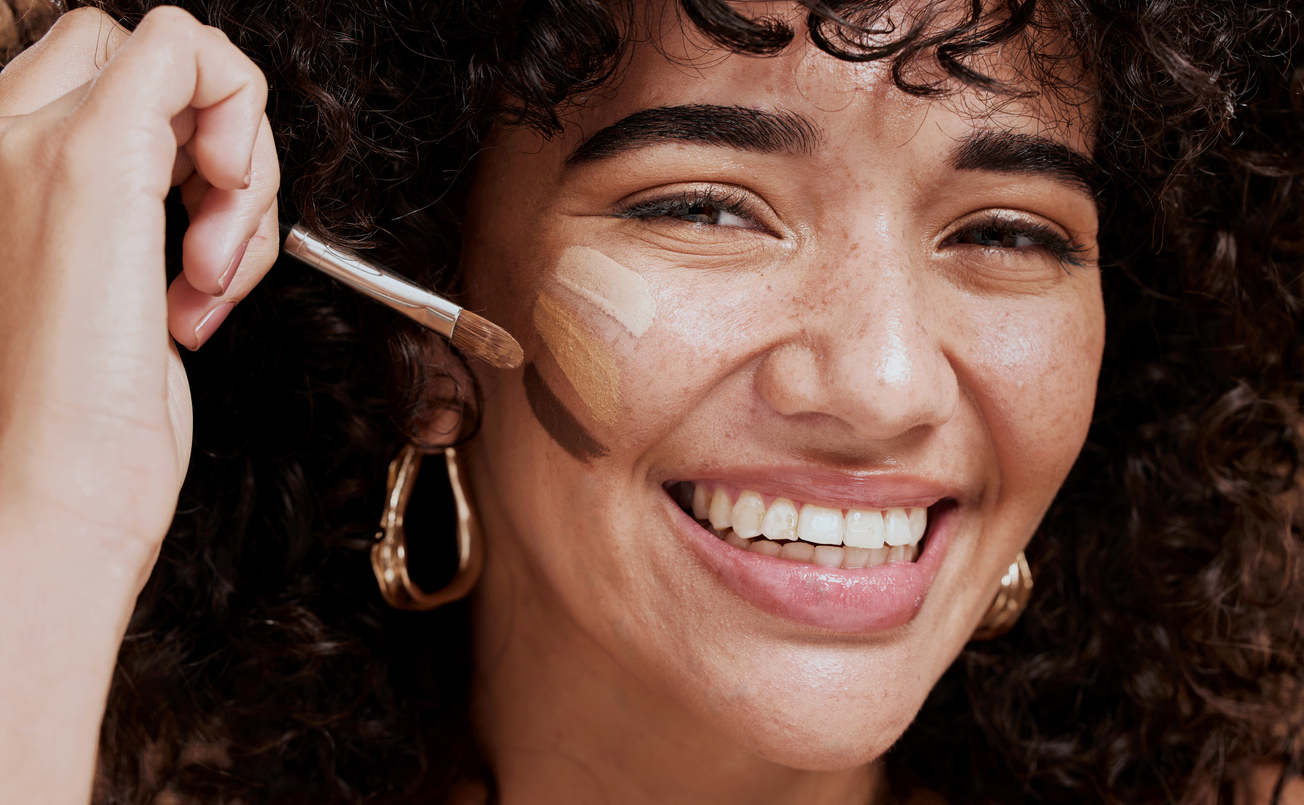Want to Be a Makeup Artist? Basic Techniques You Should Know
Anybody interested in beauty can tell you that makeup is an art. Just like any other art, it takes practice and proper technique to perfect. HICI Go offers in-person training, online courses, and live webinars to help beginners, enthusiasts, and professionals refine their beauty and wellness skills. Here, we introduce four basic techniques every makeup artist should know.
Skin Preparation
As with any art, makeup is best applied on a blank canvas. Oils, dead cells, and pore irregularities all interfere with your finished product, resulting in a look that is less than masterful. Avoid this by preparing the skin with the following steps:
- Cleanse: Before applying makeup, ensure that your skin is clean by applying a gentle cleanser. Then rinse with warm water and pat dry with a towel.
- Exfoliate: Dead skin cells make your makeup look flaky. To prevent this, use an exfoliating skin scrub to create a smooth base and a bright, lively complexion.
- Tone: A skin toner will shrink pores to create a smooth, even base. It will also trap moisture and remove any last traces of cleanser.
- Relieve: Though concealer can cover dark circles, a refreshing eye cream will reduce puffiness for a more effective cover-up.
- Hydrate: Even high-quality makeup has a drying effect. Apply a light moisturizer to provide day-long hydration and ensure a fresh complexion tomorrow.
- Prime: Finish with a thin layer of makeup primer to anchor your makeup. It will also fill enlarged pores and even out blemishes for a smoother surface.
Maintaining Hygiene
Of course, the best skin preparation routine is still insufficient if you don’t keep up with hygiene. Daily cleansing, moisturizing, and care will keep your face fresh and blemish-free, creating the perfect base for a beautiful look.
Hygiene is just as essential for your tools. Makeup brushes, sponges, and washcloths must be cleaned and stored correctly. If not, they create a warm and damp environment that fosters viral, fungal, and bacterial growth. These easily spread through direct skin contact and cause skin infections such as acne, staph, and cold sores. They can also spread allergens that may cause reactions on sensitive skin. Proper sanitization practices keep yourself, your friends, and your clients safe.
This skill is as essential for estheticians as for enthusiasts. When serving many clients, you come into contact with high quantities of pathogens and must be proactive about limiting their spread. Good hygiene will ensure a safe and positive makeup experience.
Color Matching and Correcting
Though most makeup is meant to be seen, foundation is designed to blend invisibly with your natural skin. Finding a seamless match is a must. What appears correct in the bottle might be less-than-perfect when applied, creating a mask-like appearance that nobody will love.
Makeup color matching can be a confusing skill to learn but you’ll improve with practice. Here are some tips to follow while choosing the best match:
- Determine whether undertones are warm, cool, or neutral.
- Take advantage of available shade-matching tools.
- Look at reviews and photo references left by other users.
- Test shades on multiple sections of skin to determine an overall match.
- View in different lighting, including natural and flash photography.
- Mix products if necessary to achieve the ideal tint.
These principles apply to color correcting as well. Makeup is also useful for providing slight adjustments, such as adding warmth or balancing uneven tones. Without proper technique, however, corrections can easily overcompensate or miss their mark. It takes skill to achieve a natural-looking finish.
Eyebrow Shaping and Waxing
Attractive makeup isn’t only about the skin and product. It’s easy to underestimate the impact eyebrows have in framing and defining a person’s face. Though typically an afterthought, eyebrow shaping can elevate your entire look.
Skilled estheticians use a technique called face mapping, which uses the contours of your face to determine the ideal eyebrow length, height, and placement to compliment your features. They establish an outline, tweeze excess hairs, and lightly trim what remains to create a sleek and stylish appearance.
While this can have a transformative impact, take care not to overdo it. Over-plucking or a too-short trim can create a scant or scruffy look, and improper tweezing techniques risk rupturing blood vessels to prevent future regrowth.
Learn More Makeup Artist Tips
For more beauty tips, participate in a course with HICI Go. We are happy to provide learning resources to beauty professionals and casual enthusiasts nationwide through our live webinars and online courses. In-person courses are available for students at our partner institutions, Cortiva Institute and Hollywood Institute, with instruction offered in Florida and several other states. Our courses provide continuing education to makeup artists and useful knowledge for at-home enthusiasts.
Our course offerings change frequently, so check back often to discover new courses. Contact us to get started. Or make an account to register for online courses.



